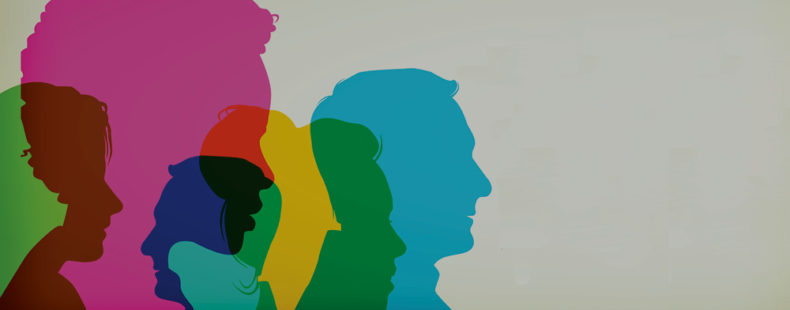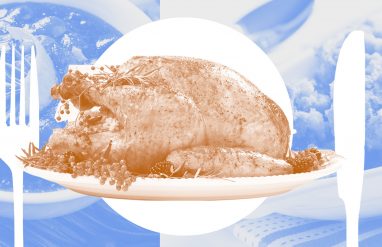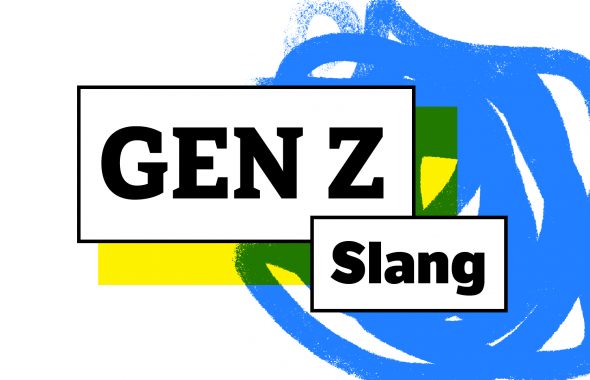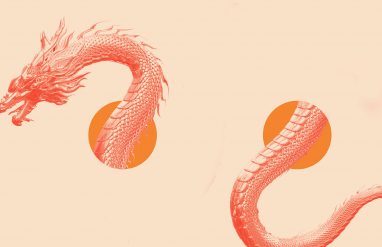by Nicole Holliday
When I was a kid, I always just assumed that everyone in the world called people like me “mixed,” because in the 1990s in central Ohio, where I grew up, mixed almost always referred to folks like me, who had one black parent and one white parent. The community I grew up in had very few people who identified as anything other than black or white, so I just thought that mixed meant “black and white” unless otherwise specified. This was comfortable for me, and it allowed me to have a way to describe my racial identity quickly and concisely.
As I got older, however, the nation’s demographics began to shift, and I started to hear all kinds of people who had parents of different races refer to themselves as mixed. Suddenly, it seemed like when I told people I was mixed, their follow-up question was “with what?” At this point, I began to wish that I had a specific term to describe people like me.
I knew that, for example, in South Africa, I’d be classified as coloured, which, despite its history as a term of oppression during the apartheid era, is still utilized as a demographic category. In the UK, people who are mixed-race typically come from black and white backgrounds, though as their population has diversified, they have some of the same struggles for meaning around the term mixed as people in the US have.
A population changing more rapidly than its language
So, how mixed is the US population? The 2010 Census Brief The Two or More Races Population: 2010 shows that the population reporting multiple races (about 9 million) increased by 32 percent from 2000 to 2010, compared with those who reported a single race (about 300 million), which increased by only 9.2 percent.
While this increase in people identifying as two or more races is often considered to be positive evidence of greater social integration, it also creates challenges around the language we use to talk about both individual and group-level racial categories. This is due, in no small part, to changes in the format of many demographic surveys, but especially in the decennial US Census.
The demographer’s version of “mixed with what?”
In the year 2000, the Census allowed for first time individuals to check more than one box in response to the question, “What is your race?”
While this greater recognition of people who fall outside of unary racial categories has been hailed as positive by multiracial advocates, it seems that the Census has, for many intents and purposes, fallen into the same underspecified pattern that I personally experienced.
“Two or more races” is like the demographer’s version of “mixed with what?”: it doesn’t actually provide useful information about exactly how people identify, which becomes even more challenging with a massive dataset like the Census’s.
On a large scale, this is a serious issue, because Census data on race is used for everything from enforcing the Voting Rights Act to allocating funding for community-based nonprofits, and thus inaccurate racial data can have tangible negative effects for majority-minority communities. However, breaking down the “Two or More Races” responses into every possible combination may also have the effect of making racial categories so small as to preclude generalization, causing a sort of demographic double bind.
Indeed, this issue of what to call and how to count people who don’t fit into neat racial categories has always been an issue for demographers. Multiracial individuals and communities, while they have recently increased in numbers in the US, are hardly a modern phenomenon. Though it is the case that the 2000 Census was the first time that individuals could select more than one racial category, it was not the first time that multiracial people were counted as their own Census category. The Census’s changing terms for multiracial people reflect some broader social trends over time.
Mulatto and other historical terms for mixed racial descent
The US once had specific terms in wide use to describe people of different types of mixed racial descent, though they mostly fell out of favor as the demographics and racial structure of the nation shifted.
According to the Pew Research Center’s Social Trends, from 1850–1880, the Census contained options for white, black, and mulatto (meaning black and white), which were important during the time of chattel slavery. In 1890, the Census kept those terms and added the now-offensive quadroon (one-quarter black) and octoroon (one-eighth black). Though they disappear from the Census by 1900, these two categories were presumably due to the fact that, in the post-Civil War era, percentage of black ancestry became important in the establishment and enforcement of Jim Crow segregation. By 1930, we have white, negro, other, and Indian, but mulatto was no longer an option.
Outside of the Census, the terms quadroon and octoroon were not only considered offensive, but also politically unnecessary by the 1930s. For much of the nation’s history and in most parts of the country, the “one-drop rule” classified any individual with a black or even partially black parent, as entirely black for legal purposes, eliminating the need for such specific terms. It is a uniquely American example of what’s called hypodescent—”assigning racially mixed individuals to the identity of the subordinate group”—and it has helped shape and reinforce the binary understanding of racial identity that persists in the US today.
The rise of broad terms
From the mid-20th century on, we have seen a dramatic increase in broader, more open-ended terms that reflect a society that sees more racial categories. There are still limitations, however, related to the many nuanced identities that compose these categories.
A Google Books Ngram comparison of terms shows a steady increase of multiracial and biracial from the 1950s until about 2000. There is also a corresponding virtual disappearance of the antiquated terms quadroon and octoroon, indicating a trend toward more general terms. In the 1980s, we start to see a sharp rise in the occurrence of the term biracial children, reflecting the increase in children born in the 1980s to parents of different races.
Both multiracial and biracial have expanded in meaning since they first gained traction in American English. In the 1950–60s, both of these terms were primarily used to discuss groups where more than one race is represented, as in multiracial society and biracial committees. Over time, as the US became more integrated and rates of interracial marriage and children who could and did identify as two or more races went up, these words became useful for talking about individuals of mixed racial descent. Despite that shift, the broadness of these terms make them less useful for people simply trying to discuss their identity without explaining their family tree.
I believe that speakers are increasingly experiencing these terms as underspecified, and that some individuals and groups that identify as two or more races are sensing a lexical gap for terms they would like for their own their specific racial combination.
What’s next? Halfrican, hafu, and blackanese
One piece of evidence for this lexical gap is the rise of the term hapa, “a person of mixed-race heritage who identifies racially and culturally as both white and of Asian descent,” especially in Hawaii and California. Originally a Hawaiian Pidgin term meaning “half,” hapa is now seeing broader use on the mainland, such as the Harvard HAPA, or the Harvard Half-Asian Person’s Association, one of the first such organizations for hapa students established in 1995.
Perhaps the best way to guess what terms might further fill these lexical gaps in English is to see what people are using in online spaces. On Twitter and Urban Dictionary, words that have been suggested to describe specific groups of multiracial people include halfrican (half African) and hafu (a person who is Japanese and something else, based on the the English half). Joining hafu are blasian and blackanese, and indeed, there are probably a dizzying array of other portmanteau words for every possible ethnic combination.
"Some may remember the nationalist uproar when African American and Japanese Ariana Miyamoto won the 2015 Miss Universe Japan title… As hafu, it seems we are at once objects of fetish and scrutiny." https://t.co/gOz0VYugIy
— Nicole Chung (@nicolesjchung) July 16, 2018
As the proportion of people with ancestry from multiple racial and ethnic groups increases alongside greater societal recognition of self-identifications, I think that some of these highly specific terms may begin to increase in use. Personally, I haven’t stopped longing for a quick, intelligible way to describe my own racial background. Maybe I’ll just start saying “halfrican” and see if it catches on!
Nicole Holliday is an Assistant Professor of Linguistics at Pomona College in Claremont, California. She received her Ph.D. in linguistics from New York University, where her dissertation focused on how individuals with one black parent and one white parent use linguistic variation to construct and perform their racial identities. Her scholarly writing has appeared in journals such as American Speech and Language in Society. She lives in Los Angeles with her dog, Dwayne “The Rock” Dogson.













